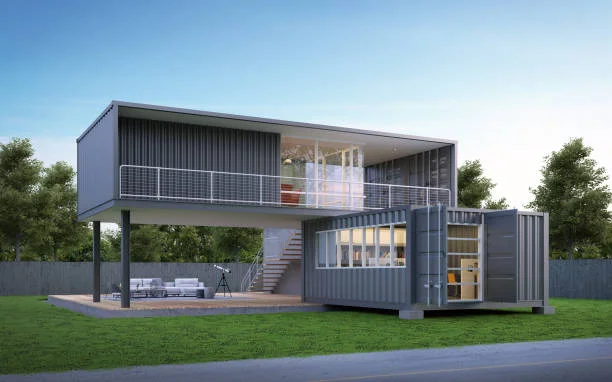In the world of modern real estate, interior design shipping container homes are revolutionizing how we think about affordable, eco-friendly housing. These repurposed steel boxes, once used for global shipping, are being transformed into stylish, functional homes that blend industrial charm with contemporary aesthetics. As a real estate agent passionate about home decor, I’ve seen a surge in interest from buyers seeking sustainable alternatives to traditional builds. If you’re exploring unique property options or looking to revamp your space, shipping container homes offer endless possibilities for creative interior design.
Whether you’re a first-time homebuyer or an investor in innovative real estate, understanding the nuances of shipping container home interior ideas can help you create a space that’s both practical and visually stunning. Let’s dive into the key elements, benefits, and tips for designing these unconventional abodes.
Why Choose Interior Design Shipping Container Homes?
Shipping container homes aren’t just a trend—they’re a smart choice for sustainable living. According to recent data from sustainable architecture sources, these homes can reduce construction waste by up to 90% compared to traditional methods. Here’s why they’re gaining popularity:
- Eco-Friendly Appeal: Made from recycled materials, they minimize environmental impact. This aligns perfectly with the growing demand for green real estate, as noted in reports from organizations like the U.S. Green Building Council.
- Cost-Effectiveness: Building or modifying a container home can cost 20-30% less than a standard house, making it ideal for budget-conscious buyers.
- Versatility: Their modular design allows for easy expansion, perfect for urban dwellers or those in remote areas.
- Durability: Steel containers withstand harsh weather, ensuring longevity in various climates.
Discover insights you might have missed in this related read.
Key Elements of Sustainable Interior Design for Container Homes
When it comes to interior design shipping container homes, the focus is on maximizing limited space while embracing the industrial vibe. Search trends show that people are increasingly looking for “minimalist shipping container home interiors” to optimize small footprints. Here are essential design principles:
1. Space Optimization and Layout
Shipping containers are typically 8 feet wide and 20-40 feet long, so smart planning is crucial.
- Use open-concept layouts to create a sense of spaciousness.
- Incorporate multi-functional furniture, like foldable tables or Murphy beds, to save room.
- Add mezzanines or lofts for vertical storage, turning a single container into a multi-level home.
2. Lighting and Ventilation
Natural light transforms the boxy feel of a container.
- Install large windows or skylights to flood interiors with sunlight—energy-efficient options can cut utility bills by 15-20%, per energy conservation studies.
- Use LED strip lighting for ambient glow, enhancing the modern aesthetic.
- Ensure proper insulation and ventilation to combat the metal’s heat-conducting properties.
3. Materials and Color Schemes
Embrace the raw steel for an industrial look, or soften it with warm tones.
- Opt for reclaimed wood, bamboo, or recycled plastics for flooring and accents—sustainable choices that add texture.
- Neutral palettes (grays, whites, and earth tones) make spaces feel larger, while bold accents like navy or terracotta add personality.
- For decor enthusiasts, integrate upcycled items like vintage crates turned into shelves, tying into broader home decor trends.
Creative Shipping Container Home Interior Ideas
Drawing from real-world examples (inspired by architectural sites like ArchDaily and Houzz), here are inspiring shipping container home interior ideas to spark your creativity:
- Minimalist Modern: Think sleek lines with white walls, black metal fixtures, and pops of greenery. A single-container studio could feature a kitchenette that doubles as a workspace.
- Rustic Industrial: Expose the container’s corrugations and pair with wooden beams and leather furniture for a cozy cabin vibe.
- Eco-Luxe: Incorporate smart home tech, like solar-powered appliances and vertical gardens, for a high-end, sustainable feel.
- Family-Friendly Designs: Stack containers for multi-bedroom setups, using sliding partitions for flexible spaces.
Pro Tip: As someone immersed in real estate and home decor, I recommend consulting local zoning laws before starting—shipping container homes may require permits in some areas.
Tips for DIY Interior Design in Shipping Container Homes
Ready to get hands-on? Here are practical tips to make your project SEO-optimized for real-life application:
- Budgeting: Allocate 40% of your budget to insulation and interiors to avoid common pitfalls like moisture issues.
- Sourcing Materials: Shop for affordable containers via sites like eBay or local ports, and source decor from sustainable brands.
- Hiring Help: Work with architects specializing in modular homes for custom cuts and reinforcements.
- SEO Bonus for Homeowners: If you’re selling or renting, highlight “interior design shipping container homes” in listings to attract eco-buyers—keywords like this boost online visibility.
For more in-depth home decor inspiration, including how to blend these ideas with traditional real estate, visit homeimprovementcast.co.uk. We cover everything from container conversions to full home makeovers.
Conclusion: The Future of Interior Design Shipping Container Homes
Interior design shipping container homes are more than a novelty—they’re a forward-thinking solution for sustainable, stylish living. With their affordability, durability, and customization potential, they’re perfect for real estate investors and decor lovers alike. If you’re considering one as your next property venture, the possibilities are as vast as your imagination.
Explore more topics that expand your perspective and curiosity on Management Works Media.






